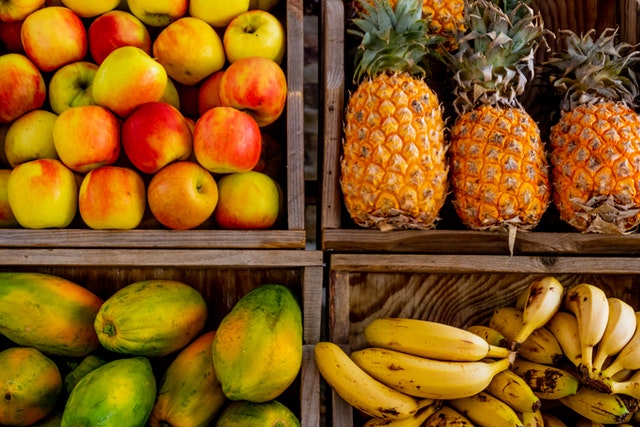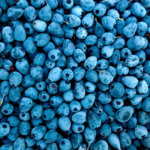You’ve probably heard of probiotics, but have you heard of prebiotics?
Despite their similar names, there are a few major distinctions.
While probiotics receive a lot of attention from health professionals, prebiotics are just as vital.
So, what exactly are prebiotics, and how can you increase your intake?
Continue reading to find out more about the benefits of prebiotics.
What Are Prebiotics and How Do They Work?
In terms of medical research, prebiotics are a relatively new discovery.
They’re not the same as probiotics, but they function in tandem with them.
Probiotics vs. Prebiotics: What’s the Difference?
Probiotics are good microorganisms that have been linked to a variety of health advantages, such as:
- Stronger immune system
- Better gut health
- Depression and anxiety symptoms are alleviated
- Reduce your body weight
- Heart health improvement
- Cancer prevention
Prebiotics are food-based substances that provide sustenance for probiotic microorganisms. They enable helpful bacteria proliferate and perform more effectively as a result of this.
Prebiotic Fiber
Prebiotics are types of fiber.
In the stomach and small intestine, fibers obstruct digestion. They make it to the colon intact, where probiotic bacteria digest them for energy.
Prebiotics are broken down into short-chain fatty acids like butyrate, acetate, and propionate during fermentation.
These can be used as a food source for some probiotic bacteria. These fatty acids, on the other hand, are known to provide health benefits in addition to feeding beneficial microorganisms, including:
- Better intestinal health
- Increased glucose and dietary fat metabolism
- As well as appetite management
- Better immune system.
Prebiotics and their digestive end-products, in short, are beneficial to one’s health.
Benefits of Prebiotics
Prebiotics are reported to have a variety of health advantages, including:
- A better balance of good bacteria to bad bacteria
- Bone health improvement
- Allergic reactions are less likely
- Reduced permeability of the intestine
- A more robust immune system
The majority of research to date, however, show that these advantages aren’t due to prebiotics. Prebiotics have only been related to favorable health effects in a few research so far. Rather, they serve as a vital ally by enhancing the efficacy of probiotics.
Prebiotics are fibers that aid in the feeding of probiotic bacteria. They boost the population of beneficial bacteria and make them perform more efficiently as a result.
Foods That Are High in Prebiotics
Prebiotics are all fiber, however not all dietary fibers are prebiotics.
The following are the most prevalent prebiotic fibers:
- Beta-Glucan
- Beta-Glucan
- Inulin
- Inulin
- Isomaltooligosaccharides
- Guar gum
- Lactulose
- Resistant Starch, including maltodextrin
- Xylooligosaccharides
These can be found in large quantities in plant-based diets. To promote a diverse gut microbiota, it’s ideal to eat a variety of prebiotic-rich foods.
Here are a few foods that can help your gut bacteria thrive.
Root Vegetables
Inulin, fructooligosaccharides, and resistant starch are abundant in root vegetables.
This category covers both actual roots and bulbs. Onions, leeks, garlic, jicama, Jerusalem artichokes, and chicory root are some examples.
To increase prebiotic intake, onions and garlic can be added to a variety of foods. Roasted Jerusalem artichokes and leeks are wonderful, and jicama is delicious raw in salads or baked like French fries.
Root vegetables have been found in human and animal research to have a favorable impact on the gut microbiome.
Pigs fed inulin or Jerusalem artichoke exhibited increased amounts of short-chain fatty acids in the colon after 40 days, according to one study. Increases in beneficial Bifidobacterium spp. bacteria were also observed in the Jerusalem artichoke group.
In addition, volunteers who drank juice shots supplemented with inulin from Jerusalem artichoke had considerably higher increases in probiotic bacteria than those who drank plain juice in a small human trial.
Fruits
It is suggested that you eat fruit every day as part of a healthy and balanced diet.
Certain fruits have beneficial effects on the intestinal flora, among many other health benefits.
Prebiotic fibers are abundant in apples and bananas. Pectin is abundant in apples, while inulin is present in ripe bananas, and resistant starch is present in unripe bananas.
Women who ate two medium bananas every day for 60 days found modest increases in bifidobacteria in one small research.
Pectin in apples, on the other hand, has been shown in mouse tests to raise levels of beneficial gut flora while decreasing harmful bacterial strains.
Spring Vegetables
Prebiotic fibers, such as inulin, fructooligosaccharides, and xylooligosaccharides, are abundant in spring vegetables.
Greens (particularly dandelion greens), peas, corn, leeks, and asparagus are examples.
Greens can be used in salads, however the bitterness of dandelion greens can be reduced by soaking or sautéing them. Other spring vegetables are extremely adaptable and can be used in a variety of cuisines.
Cocoa
Would it surprise you to learn that chocolate can aid in the maintenance of a healthy gut microbiome?
Cocoa beans include fibers that probiotics can ferment. They also include polyphenols, which are antioxidants that can aid in the growth of good bacteria in the stomach.
Cocoa powder promotes a healthy ratio of good to bad bacteria in the gut, according to animal studies and limited human studies.
It’s important to remember that not all chocolate is made equal. Look for dark chocolate that contains few ingredients, or add pure cocoa powder to yogurt, smoothies, cereals, or baked goods.
Lentils
Lentils are legumes, meaning that they grow in pods.
The amount of prebiotic fiber in lentils varies based on the variety. Some have more resistant starches, while others contain more fructooligosaccharides or sugar alcohols.
Lentil-based diets create a favorable balance of beneficial to bad gut microbes, according to animal research. Human data, on the other hand, is scarce.
Lentils, on the other hand, have numerous health benefits, thus they should be included in the diet as acceptable. They’re delicious in soups, curries, salads, and even by themselves.
Whole Grains
In the Western diet, wheat is the most prevalent source of prebiotics.
Prebiotic fiber can be found in wheat and other whole grains. Barley and oats, for example, are high in beta-glucan. Others have resistant starch or fibers in them.
Consumption of 48 grams of whole grain breakfast every day for three weeks resulted in significant increases in bifidobacteria and lactobacilli in a small human research.
In one lab investigation, beta-glucan from oats outperformed other prebiotic meals like corn and sugar beets in terms of prebiotic action.
Experiment with a range of whole grains to get the most prebiotic benefit. Whole wheat bread, rice, and pasta are excellent choices, but don’t overlook grains like barley, rye, farro, and quinoa.
Nuts
Prebiotic fiber can be found in almost all nuts and seeds, although walnuts are particularly high in it.
Daily walnut consumption considerably increased the prevalence of Ruminococcaceae and Bifidobacteria while significantly lowering the levels of Clostridium sp. bacteria in one human investigation with 135 healthy adult participants.
Walnuts were consumed in this trial at a rate of 43 grams per day (about 1/3 cup chopped). Because walnuts have a high calorie value, participants cut calories from fat or carbohydrates.
Are Prebiotics Beneficial to Everyone?
Prebiotics are generally considered safe by most people.
Some patients with irritable bowel syndrome or other digestive problems, on the other hand, are sensitive to prebiotic fibers. Because many prebiotics are high in FODMAPs (fermentable oligosaccharides, disaccharides, monosaccharides and polyols), this is the case.
FODMAPs are fibers that, like prebiotics, undergo fermentation in the colon. Certain prebiotic foods, in fact, are high in FODMAPs.
Some people are particularly sensitive to FODMAPs, and when they consume high-FODMAP foods, they experience pain, bloating, gas, diarrhea, and stomach distention.
People who commonly suffer this type of pain may benefit from a diet that temporarily eliminates foods high in FODMAPs.
That’s not to say you should avoid prebiotics entirely. This changes the makeup of helpful gut bacteria, many of which help to alleviate gastrointestinal discomfort.
Even on a FODMAP elimination diet, high-FODMAP prebiotic foods should be gradually reintroduced if tolerated.
Takeaway
To yet, no research have directly connected prebiotics to improved health.
That isn’t to say they aren’t important. Prebiotics provide food for probiotics, allowing them to act more efficiently.
As a result, they serve a supporting role in a variety of vital body activities.
There are several supplements available, but research has not kept pace with consumer demand.
For the time being, the best approach to get prebiotics is to eat a diet rich in fiber plant foods.
Include whole grains, root vegetables, spring vegetables (when available), fruits, legumes, and nuts as much as possible.
A tiny bit of good dark chocolate won’t harm, either.










